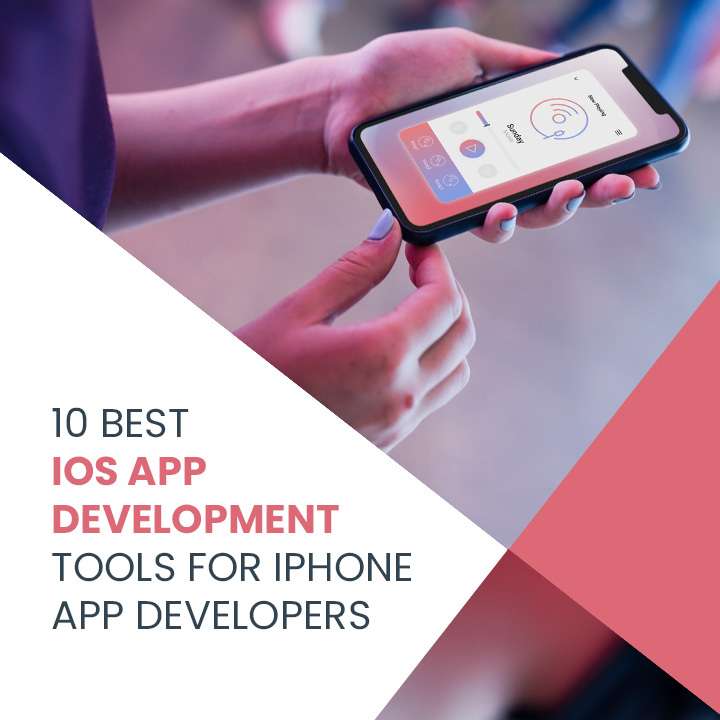Companies recognize how important it is to stay close to their clients. One of the closest things to the customers is the smartphone of today. Smartphones also allow businesses to be closer to their customers than they can be. With Android and iOS as the central operating systems for mobile phones, app developers must ensure their apps are compatible to reach an even more significant number of users. UK App Developers need to understand that being able to develop apps for both Operating Systems can be highly advantageous to them.
According to estimates from Backlinko, over 1 billion people use iPhones; iPhones also account for 65% of phone purchases within the US. Apple Store is the second most well-known and well-known online retailer for mobile apps. Apple Store is second in both popularity and use. Apple Store offers more than 2 million apps to choose from. Some studies indicate that Apple paid nearly $50 billion in app development fees in 2008.
This is the reason developers must develop applications that work well on iOS.
10 Best iOS App Development Tools for iPhone App Developers
The acclaim of the iPhone and the share it holds in the market continues to increase.
Understanding these tools is crucial if you work in the development field or use iOS frameworks and apps in businesses. In addition, you’ll need to be familiar with the most efficient iOS tools for developing apps for creating innovative iOS apps that can compete in the highly competitive iOS applications app market. To help you with this, we’ve compiled a complete listing of the best iOS App Development Tools.
1. Swift (Programming Language):
Swift was released for the first time in the year 2014. Swift is a precise programming language designed for programming created by Apple. Since it’s relatively modern compared to other programming languages, such as C, Java, and C++, it has some very advanced capabilities. Swift is designed to simplify writing code and understanding. The features of Swift include:
Advanced control flow
- Memory-safe and type-safe language
- The management of memory using an automated
- Effective error handling
- Functional programming
- Supports kinds of inferred types.
Soon, Swift will surely be the language Apple will rely more upon. As per Apple, Swift is also 2.6 times faster than Objective C. It’s crucial to learn the language.
2. Objective-C (Programming Language):
This was the primary language that Steve Jobs chose; Objective-C can be described as a programming language derivative of C. Objective-C is the same syntax and structure as C. It makes it easy to master and learn for most programmers already familiar with C. It comes with several key features, including:
- The general-purpose, object-oriented languages
- Supports encapsulation, data hiding, inheritance, abstraction, polymorphism
- Helps handle the handling of exceptions and overloading by operators.
3. Xcode (IDE & Editor):
Similar to Objective-C, Xcode is the very first Integrated Development Environment (IDE) used for development by Apple. Xcode was first introduced in 2003. It provides app developers UK with an integrated workflow that allows the programming and testing of software while also allowing for debugging and designing User Interfaces. Xcode is a must for developers because its expertise will enable them to create cross-device apps. In addition, it is equipped with advanced capabilities, such as:
- Instruments for analyzing instruments
- Latest SDKs
- Design instruments that are designed specifically to analyze the code
- Swift UI and Interface Builder
- Swift C/C++ Objective C compilers
4. Code Runner (IDE & Editor):
It’s a tool for developing robust and complex software. Code Runner is compatible with 25 programming languages and is incredibly lightweight. It has built-in consoles, the best text editor, and a custom keys binding. Apps developers UK can live-check their errors and write efficient code without altering it. Alternatives to Code Runner that you can consider are AppX, Phone Gap, Fabric App Code, and Phone Gap. App Code.
5. Flawless (App Design):
Flawless enables developers to perform different tasks, such as iOS application analysis, comparison, and design implementation. The application allows designers to create dynamic designs, capture animated pictures, and study motions and animations. Flawless can be integrated into Xcode, a popular choice for developers. It can support Zeplin files and Quick hotkeys, and it also helps long-screen designs. Perfect doesn’t need the addition of any configurations, set-up, or linking to libraries from third-party sources. Some other design programs that apps to look into comprise Hyperion, Haiku, and Figma.
6. Rx Swift (Libraries):
Rx Swift utilizes functional type operators to write an event-based program and asynchronous code. Asynchronous programming increases the speed and performance it can provide to its users. Rx Swift lets code respond to data and process it cleanly, discreetly, securely, safely, and sequentially. It permits code to run in parallel and enhances the program’s performance.
7. Alamo Fire (Libraries):
Alamo Fire is a separate library that developers can use to develop iOS programs. This HTTP network-based library provides an interface that differs from Apple’s network stack. It’s utterly dependent on Swift and handles web requests and responses to them in iOS and macOS. Alongside HTTP methods, Swift incorporates JSON serialization of parameters, response and networking enhancements, authentication services, and various alternatives. Two of these functions are
- AlamofireImage
- AlamofireNetworkActivityIndicator
Cocoa pods SD Web image and Promise Kit provide robust libraries.
8. Parse (Backend Services):
The business has since evolved into an open-source project, with its blog, documentation, and forum for community members. Parse lets developers save data in the cloud, manage the creation of dashboards and push notifications and run custom applications in the cloud. Parse was named of the top 50 most innovative companies in 2013 to accelerate the development of applications. Some of the software backbends
- Cloud-based storage of objects as well as storage of files
- Social media integration capabilities
- Parse Host and Analytics
- Identity log-ins
- Create custom backend code
A well-known and acknowledged backend solution and a great option to Parse One of the more unique services for backbends is Firebase which also provides excellent opportunities, such as real-time backend solutions, Google hosting, and the model-observer schema for databases.
9. Ray Gun (Debugging):
Ray gun is cloud-based software that records the performance of applications, crashes, and errors. Ray Gun has more than 30 languages and frameworks, making the tool a device that runs across all devices and is highly sought-after. For example, Raygun4Apple is a Raygun4Apple library that can track Objective-C and Swift applications. It enables developers to obtain a comprehensive and specific crash report. Parse can also be a powerful tool for debugging.
10. Pinkham (Plugin):
The most valuable plugins for Xcode are available in Peckham. Peckham lets you create and edit statements easily with an auto-complete feature. This feature enables developers to write and import statements, headers, and more directly into code through the help of keyboard shortcuts like command+control+p. In addition, a wide range of Xcode plugins offers sophisticated and practical functions. Other plugins to consider comprise Dash, Crayons, HKSnippet, Injections, and All Targets.
Conclusion:
For iOS app development UK companies, proficiency in different languages and tools is essential to their professional advancement. The need for developers has been increasing significantly over the last decade. Since Apple is the sole source of large portions of the smart phones being sold and used, iOS developers have also seen a substantial rise in demands for their services and the scope regarding pay and scale. Employers prefer those with a solid understanding of Swift and cross-device development, as well as a variety of tools. The ability to create an interactive interface by using Interface Builder or software versioning systems and having a good understanding of the top frameworks is also essential. There are many powerful development tools that you can learn and master to develop fluid, receptive, and user-friendly iOS apps.
FAQS:
Which is the better choice? Swift or Xcode? Swift?
Swift can be applied with Apple operating systems, whereas Xcode provides users with a simple process and user interface for any task.
What’s the necessary skill required to become an iOS Designer?
Expertise in programming languages (Objective-C, Swift). Experience using the IDEs (App Code, Code Runner, Xcode). Experience with application development frameworks (AVFoundation, RxSwift, UIKit, XCTest, XCUITest).
What language is used to develop iOS applications?
Swift is a user-friendly yet powerful programming language designed specifically for iOS, iPadOS, macOS TVOS, watchOS, and macOS TVOS. The writing of Swift code is enjoyable and engaging. The syntax is easy to understand but comprehend, and Swift is a modern language with features developers will appreciate.










